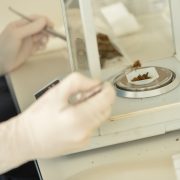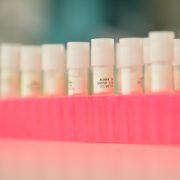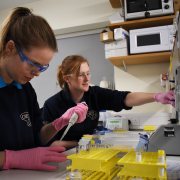Being global leaders in animal welfare for more than 35,000 animals is no easy task, it takes a dedicated team of keepers, vets and scientists. There’s a myriad of questions about the animals that our brilliant team set out to answer, every single day. Are the animals happy? Are they healthy?Are any females pregnant? Many of the answers to these questions can be found in a very unusual place – POO.
AT THE ZOO…
These nuggets of brown matter hold the secrets to understanding nearly anything about an animal species but, how do we get this information? Chester Zoo is home to a unique laboratory team of endocrinologists and it’s the only one of its kind at any zoo in Europe. Working closely with each of our animal teams, these scientists help to solve the day-to-day mysteries of animal management. John O’Hanlon is a member of the team that works in the lab and explains how he looks into hormones.
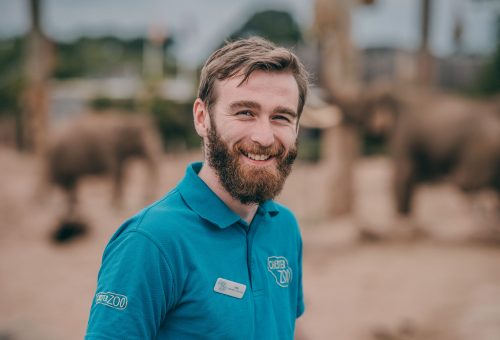
“Foraging through faeces doesn’t sound like the nicest job at the zoo, but poo really can be fascinating! This waste product holds lots of hormones which can tell us tonnes of useful information about an animal. It’s full of “metabolites”, broken down remnants of hormones, the diverse assortment of chemicals that make every aspect of our body tick along nicely.”
“The hormones of every animal worldwide are held continuously in careful balance, and reflect the changes happening outside and inside their body. So, we can use poo samples to see if an animal is happy, healthy or even pregnant. We’ve successfully predicted due dates of Eastern black rhinos and Asian elephants and we have detailed graphs mapping hormones right the way through some of our animals pregnancies. They give us the opportunity to compare pregnancies within the same animal and species, which is extremely helpful to our animal teams.”
“We receive our poo samples from keepers and, to ensure that they bring the right sample from the right animal, they have to carefully observe the animal’s toilet habits! If we are trying to detect a pregnancy, then the first thing we look for is a rise in progesterone, as this hormone increases during a pregnancy, and then when an animal is due to give birth we look for a drop in their progesterone levels. Monitoring hormone levels can also give us clues as to when a female is ready to conceive, as we will see a rise in oestrogen. We then relay this information back to keepers so they know the perfect time to mix the animals.”
“We have more than 100,000 poo samples and counting in our huge walk-in freezer! As well as monitoring animals at Chester, we receive samples from zoos all over Europe to analyse. This means we receive more than 300 external samples, on top of 300 internal samples to analyse each month, we are kept very busy. This collaboration with other zoos is vital for reproductive management across multiple European breeding programmes and it’s great knowing we’re doing our bit to help create insurance populations for some of the world’s rarest animals.”
The knowledge gained through our research at the zoo doesn’t just help animals in zoos, we’ve also been able to use it out in the wild. Our team is currently involved in several projects in Northern Kenya, including one focusing on increasing the population of Eastern black rhinos where poaching has caused their numbers to crash, with fewer than 700 remaining in the wild. With support from sponsor and conservation enabler Rhino Products Ltd, we have been able to help set up the first ever wildlife field endocrinology lab in Kenya.
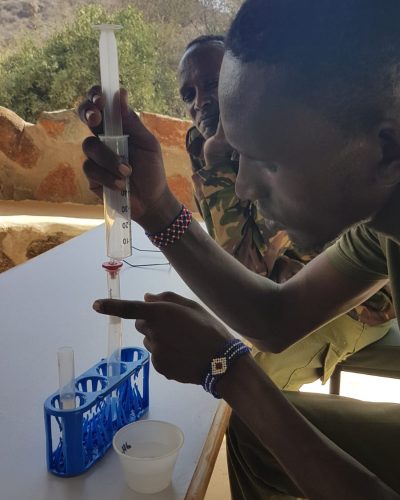
The lab, which is based at Lewa Wildlife Conservancy, will help to identify factors that influence healthy reproduction in Eastern black rhinos. Soon, pregnant females in the area will be identified on-site without having to send samples further afield for diagnostic testing, a lengthy and costly process. Dr. Sue Walker, Head of Science at Chester Zoo, and Becky Mogey our Lab Coordinator, visited the new lab last year to provide technical training to our partners in the Kenyan Wildlife Service and Lewa Wildlife Conservancy to help them use endocrinology techniques independently.
With this new facility and training, conservationists in Kenya are hoping to expand their research to include other threatened species such as the critically endangered Eastern bongo. This is a species that is already seeing some success in UK zoos; in September we celebrated the first Eastern bongo to be born at the zoo in 11 years. With only 70 left in the wild, the birth of Elinah was of huge importance for the survival of this incredible species. There’s a lot that remains unknown about the bongo and by studying populations both in zoos and the wild, we hope to find out more about their nutrition and reproductive physiology, with the goal of preventing their extinction.
This project has been made possible with thanks to Rhino Products Ltd. If your company would like to support our conservation in the field, please contact Rose on r.gelder@chesterzoo.org
OUR TEAM OF EXPERTS WORK IN SIX REGIONS AROUND THE GLOBE – REPRESENTING SOME OF THE PLANET’S MOST BIODIVERSE HABITATS. Discover more about our SCIENCE AND CONSERVATION work.
